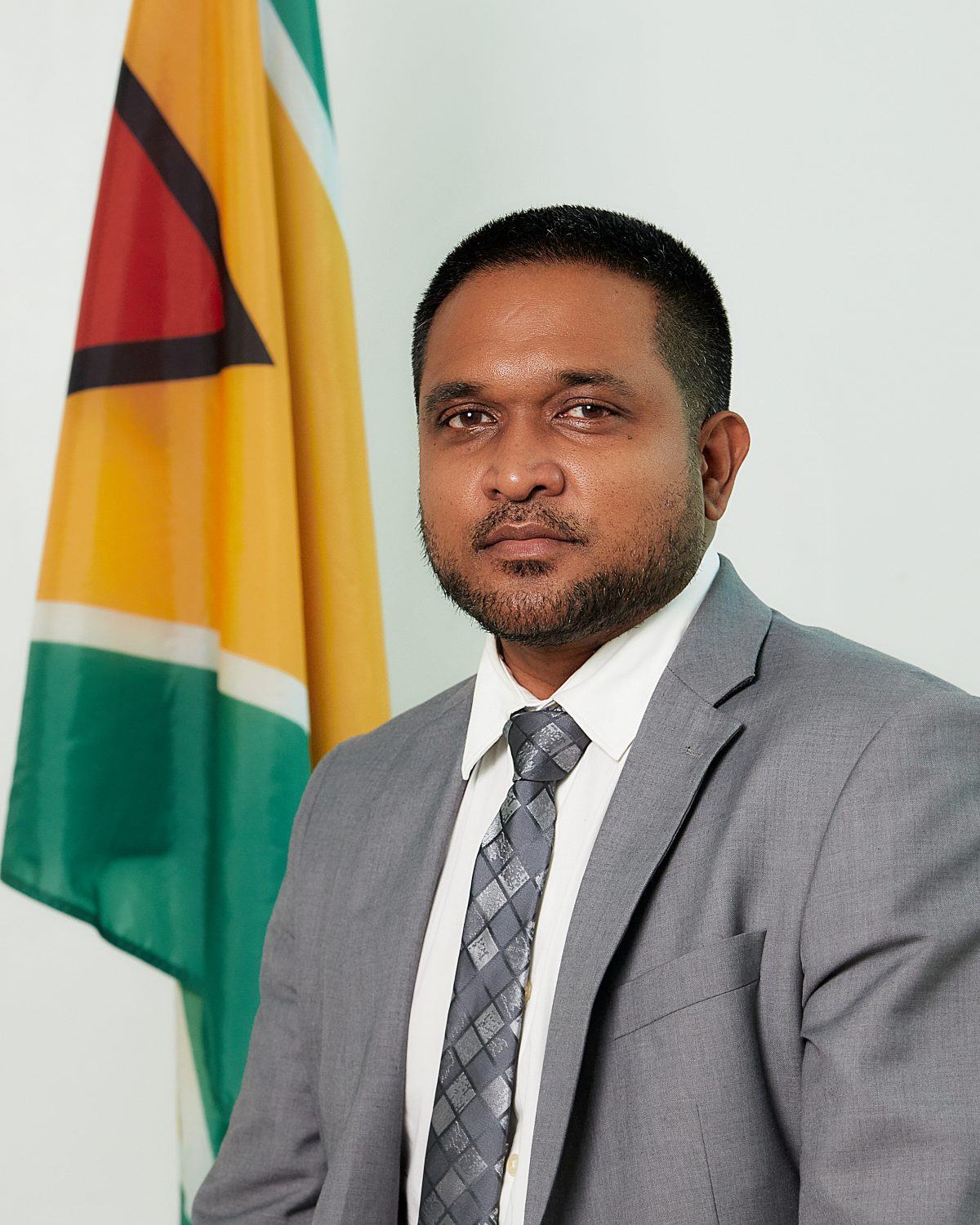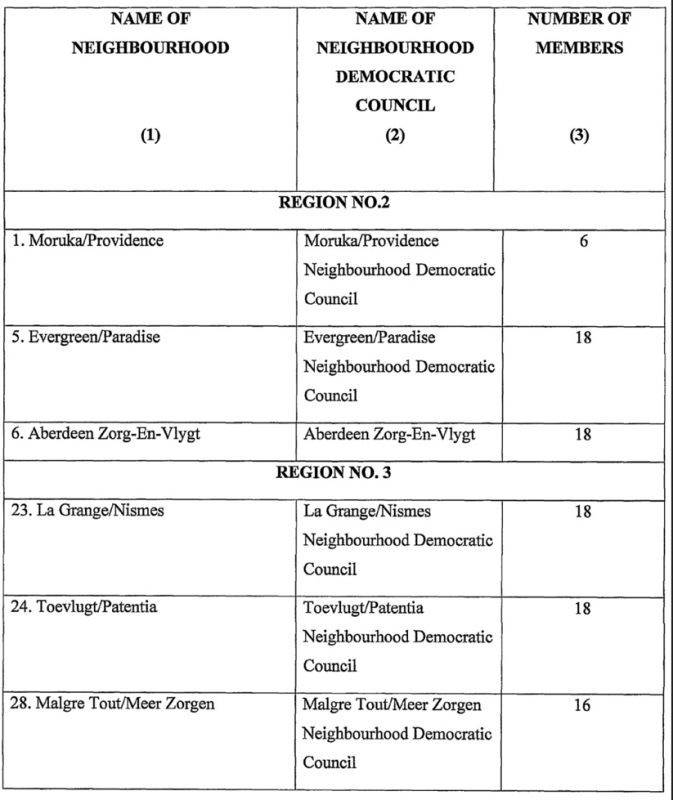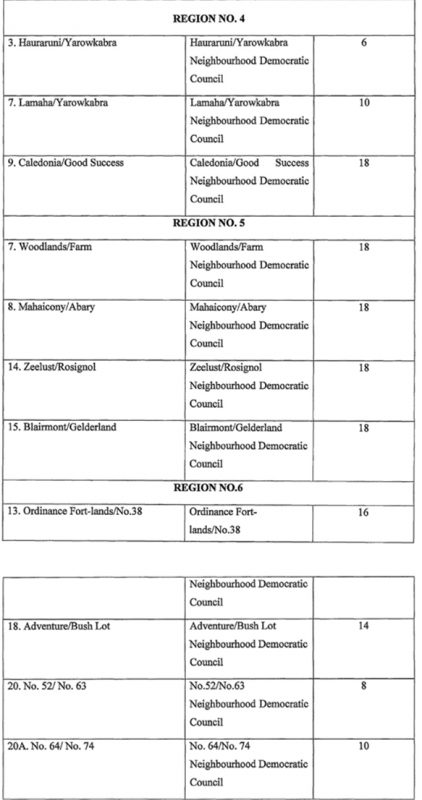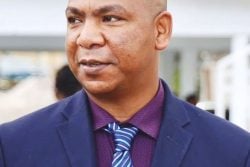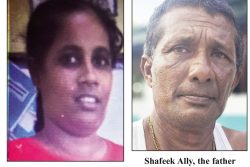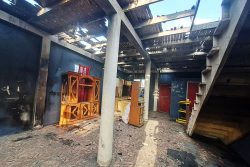Minister of Local Government and Regional Development Nigel Dharamlall on Friday defended government’s decision to revert to the use of 2016 district boundaries, some of which have been extended, for the upcoming 2023 Local Government Elections (LGE), while saying that it would ensure there is greater democracy and representation of the people at the local level.
Dharamlall told a press conference yesterday morning that for the 2018 LGE, a total of 14 local authorities were changed by the then A Partnership for National Unity + Alliance For Change (APNU+AFC) administration.
For better representation, he said, the People’s Progressive Party/ Civic (PPP/C) government has decided to revert to the boundaries used at the polls in 2016. In a few instances, he said some were extended. “…. For LGE we have made some changes which we believe will redound to the benefit of greater, expanded and enhanced community development…We are aware that local democracy is essential to the overall development of our communities and to our people and our country,” Dharamlall told the press conference, which was held at the Arthur Chung Conference Centre.
The changes were made last month by Dharamlall via Order No. 44 of 2022 – The Local Democratic Organs (Neighbourhood Democratic Councils) (Amendment) Order 2022, which was gazetted.
According to Dharamlall, the modifications will see an increase in the complement of councillors in local democratic organs in the 80 local authority areas; namely the 70 Neighborhood Democratic Councils (NDCs) and the 10 municipalities.
In 2018, he said there were 1,192 council seats across the country in 596 constituencies, while for the upcoming LGE, there will be 1,220 council seats in 610 constituencies.
Dharamlall said the changes were made following consultations with the communities and residents. “As a matter of fact, I would want to think that there was a deliberate attempt to keep out the public from this process in 2018 because a lot of the changes were done internally through the Guyana Elections Commission and not through the consultative national process,” he noted.
In outlining the changes, Dharamlall explained that the district boundary for Mabaruma Township in Region One has been extended to include the community of Wauna.
Dharamlall claimed that the APNU+AFC administration had excluded Wauna because of its PPP/C stronghold. “In Region One, there will be no discrimination in terms of who participates in local democracy quite unlike what obtained a few years ago, especially in the 2018 Local Government Elec-tions when the APNU+AFC conducted those elections,” he said.
Over in Region Two, where there was a “hurried” establishment of some NDCs, Dharamlall explained that the constituency boundaries for some NDCs had collapsed or were even merged.
As such, he said the government has decided to revert to the 2016 district boundaries and the Kitty-Providence and Moruca-Phoenix would be merged into one NDC since their respective populations are small. “…It will serve better for administrative purposes as well as capacity development and physical development….There will be greater representation on the ground,” Dharamlall said.
Similarly, he told the media that government will be reverting to the 2016 district boundaries in Regions Three and Four. “Some of these were also changed by the last Government and we found that a lot of representation could not have happened because their boundaries were changed in 2018 for political purposes……That ended up in victimization and discrimination by the last administration,” he related.
In Region Three, Dharamall disclosed that the Toevlugt-Patentia constituency has been extended to Free and Easy in order to capture a few hundred residents who reside beyond the Patentia area. “They will now be captured within an administrative area,” he said.
In Region Five, the community of Woodlands Park has been extended to include Number 10, Little Biaboo and Big Biaboo. “Part of Woodlands-Farm includes going into the De Hoop access road and many areas along the De Hoop access road are also not part of an administrative area,” he said.
For this region, government will also be reverting to the 2016 boundaries since in 2018, many of these boundaries collapsed or were merged by the previous administration.
Dharamlall added that Region Six, which consists of Number 52-74 neighbourhood, which is the largest NDC area in the country, would be split into two NDCs. “Based on [the] representation of residents of those areas or constituencies or villages in those areas as well as our outreach and meetings and consultation with them, we have decided in consultation that the 52-74 NDC areas will now be split into two NDCs. 52 to 63 and 54 to 74,” he explained.
This, according to Dharamlall will allow for better management and also provide greater representation for the people in those areas.
The other areas, he said remain, the same. “Which is the municipality of Mahdia, the township of Lethem as well as the NDC of Aranaputa in Region Nine, Kwakwani, Linden all of those will remain the same as well as Georgetown,” Dharamlall pointed out.
However, one of the changes – the reduction of the council seats at the Hauraruni / Yarowkabra NDC from eight to six and the reduction of the constituencies from four to three – has been challenged as unconstitutional by Alliance For Change (AFC) member Michael Carrington, who has complained to the Guyana Elections Commission that there was no consultation with the citizens of the NDC area or the Council, over the reduction.
“I, therefore, request the Commission to address this matter immediately, the present reduction reduces the opportunity for two councilors, and this can eliminate the chance for the smaller group from gaining a seat on the council,” Carrington wrote to Chairperson of the GECOM Justice (ret’d) Claudette Singh in a letter on Monday.
He noted that he had lobbied for the NDC to be established starting in 2010 when he was a councilor of the Region Democratic Council of Region 4 and continued the lobbying when I became a Member of Parliament. “…so I have the legitimate expectation that the eight council seats will be the legal amount,” he wrote in the letter, which was shared with the media.
Many challenges
Dharamlall admitted that the government has had “many” challenges with some of the municipalities as well as NDCs and it believes that the upcoming LGE will address this. “We believe that with Local Government Elections and the type of activism that has been taking place at the local level, we are going to see greater determination at the local level and hopefully we are going to see better managed communities,” he said.
In October this year, the Ministry of Local Government and Regional Development had announced that LGE would be held on March 13, 2023.
LGE were constitutionally due at the end of last year but GECOM was without a Chief Election Officer and could not have prepared to host the elections.
A number of contesting parties have since submitted to symbol to contest the LGE. The deadline was midnight Monday.
APNU, the major opposition, has been calling for a fresh voters list and has expressed concerns over the non-publishing of the voters list in constituencies.
Although the party is undecided as to whether it will contest the LGE, its leader, Aubrey Norton had confirmed to this newspaper that they had submitted a symbol.
Norton had told a press conference on Tuesday that the coalition will not allow the PPP/C the opportunity to control their strongholds.
Last week, APNU’s parliamentary partner, the AFC, announced that it would not contest the upcoming LGE without changes to the list of electors.
The AFC, which is currently in a partnership with APNU had taken part in the 2018, local government elections on its own.
Some $2.9 billion has been allocated to GECOM for preparatory works to ensure the successful planning and execution of LGE.
